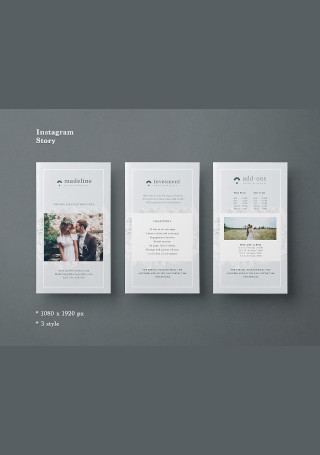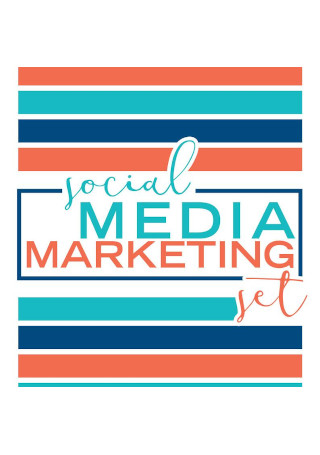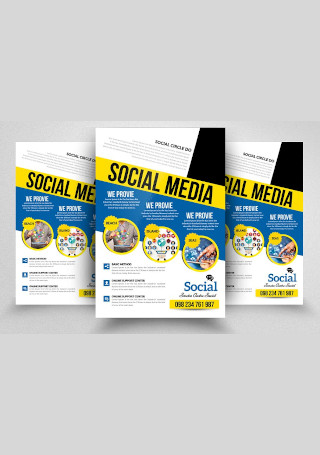19+ Facebook Marketing Samples
-

Facebook Marketing and Advertising
download now -

Social Media Marketing
download now -

Facebook Marketing
download now -

Facebook Marketing and Advertising Proposal
download now -

Photographer Social Media Marketing
download now -

Social Media Marketing in Vector EPS
download now -

Social media marketing InDesign
download now -

Social Media Marketing Design
download now -

Sample Social Media Marketing Flyer
download now -

Social Media and Digital Marketing
download now -

Social Media Marketing Flyer Template
download now -

Social Media Marketing PSD Flyer
download now -

Modern social media marketing
download now -

Social Media Marketing InDesign
download now -

Facebook Promotion Marketing Board
download now -

Social Media Marketing in Vector EPS
download now -

Retro Social Media Marketing Flyer
download now
“There are 2.41 billion monthly active users on Facebook as of June 30, 2019.”
“93% of social media advertisers use Facebook ads.”
“78% of American consumers claim to have discovered products on Facebook.”
What Is Facebook Marketing?
Facebook marketing refers to the process of creating and using Facebook as a communications channel to attract and connect with a targeted audience. The growing popularity of Facebook has made it the perfect platform for brands to surface themselves to the network’s vast user space. It can be a powerful tool in digital marketing that businesses strive to maximize for discoverability. After all, creating meaningful interactions with prospects and customers is one of the purest ways to link them to your brand.
Types of Facebook Marketing Ads
Formatting your ads to meet the needs and interests of your audience is vital in Facebook marketing. There are a ton of formats and ad types that allow marketers to showcase their content creatively to their list of followers. However, the only way this could impact your market effectively is if your campaigns remain targeted to specific groups and goals. Before you get started with the design process, it’s essential to know which Facebook Ads to employ to keep your campaign strategies on track.
How to Optimize Facebook Marketing
Although there are many alternative channels that handle brand advertisements effectively, Facebook still dominates the market with the largest number of personal accounts and Facebook Business Pages. The exposure a business can get by simply sharing relevant content to reach customers is something that every marketer needs to stay on the leaderboard. Thus, knowing what you can do to raise your market presence and boost lead conversions is essential to obtaining social media marketing success.
Step 1) Create a Facebook Page.
First things first: You need to have an account to even be on the network. Businesses who go on Facebook to market their brand are better off with a Facebook Page than a personal profile. This enables you to promote your products and services with the help of unique tools and features that only those who run a Facebook Page can optimize. Managing your account would also be a lot easier when the platform is tailored to your exact needs. And to make your Page more shareable and easy to find, it’s best to create a personalized URL in your Facebook settings.
Step 2) Customize Your Profile.
Your Facebook profile picture and cover photo don’t only add to the visual aesthetic of your Page, but they also make a good first impression on who you are. It’s one of the first things that visitors encounter when they come across your business Page on Facebook Search or on a sponsored post, so you best believe that users will care about what they see. Be sure to choose photos that meet the standard image dimensions of the network, for both mobile and desktop computers, to get a good display of images. You can even choose from a collection of social media templates to get a head start in the process. By doing so, visitors and followers can easily recognize your business for continuous engagement.
Step 3) Fill the “About” Section of Your Page.
Startups and small businesses have yet to make themselves known in the market. Thus, people who visit your page will likely look for your “About” tab over anything else. This should contain an overview of who you are and what you do to give visitors a sense of what they can expect from your Page before they decide to connect with you. A brief yet descriptive copy for this section should make it easy to convert visitors to actual followers of your business.
Step 4) Choose a CTA Button.
It’s only been a few years since Facebook introduced a handy feature that many advertisers are thankful for — the call-to-action button. Adding a CTA button at the top of your Facebook Page is one of the best ways to get people to stay in touch. Business users can choose from the seven pre-made button options (“Shop Now,” “Contact Us,” “Sign Up,” “Book Now,” “Watch Video,” “Use App,” and “Play Game”) that will direct visitors to any homepage, landing page, or platform you are aligned with.
Step 5) Start Posting Compelling Content.
If you want your name to appear on a person’s News Feed, you have to begin planning and publishing your content. Along with text, social media experts suggest maximizing the use of photos and videos for higher engagement. Using visuals to attract and engross readers can help elevate your Facebook strategy and establish share-worthy content. This is one of the reasons why many businesses have found success in creating relevant How-Tos, tutorials, video compilations, and infographics to connect with their Facebook market.
The Dos and Don’ts of Facebook Marketing
Using Facebook to grow your business is a modernized approach that has helped many companies establish their presence online. With over a billion Facebook users on the web and Facebook app, breaking boundaries is not a step you can conquer so easily. Maximizing your marketing potential on this social network must be strategically done for you to start seeing the desired results.
The Dos
1. Do speak to your audience.
The number of likes you get on your Facebook Page might be a good sign, but it won’t be enough to measure your success. Connecting with your audience on a personal level is one way to nurture engagement. Targetting potential shoppers and creating content that they can relate to is far more critical than gaining likes. The key is to make a good impression with first-time visitors to prompt further interaction and generate leads.
2. To communicate with images.
Posts that include photos almost always receive higher response rates than those without them. Visual content is essential in online marketing in terms of capturing one’s attention in a dense market. Some marketers even use infographics to replace blocks of text from their content and to strengthen their hold on readers. It doesn’t have to be shots from a professional shoot, but it does pay to bring your fans on a behind-the-scenes journey of your marketing campaigns.
3. To interact with customers.
Facebook is an online platform that people use to interact with one another in real-time. This means users expect you to be responsive to comments and questions, without a lengthy span in between their inquiry and your reply. It’s only natural for shoppers to expect the best from your customer service efforts, so the least you can is to stay on top of things to avoid an angry follow-up. If there are queries that are difficult to reply to at the moment, you can buy time by empathizing with the poster and letting them know you’ll get back to them once everything has settled.
4. Do commit to consistency.
Social media marketing is all about staying committed. One way to boost recognition is by posting consistently on your Page. It doesn’t have to scream “Sell Sell Sell,” but it does have to remind your audience that you do exist and that you aren’t going anywhere, anytime soon. Pinning posts to the top of your profile is another way to emphasize specific content. These posts may contain links to your product landing pages or company newsroom to drive more traffic. It’s important to provide people with enough reasons to follow your Page for upcoming posts.
5. Do use hashtags strategically.
Before you start stuffing your Facebook posts with random hashtags, do consider how the keyword may boost your rank on specific search engines. Social media search can be a challenge for most marketers due to how people fail to use the right hashtags. The truth is you don’t have to use a ton of hashtags to boost exposure, as this will only lessen the engagement that the post receives. A rule of thumb is to limit the use of hashtags to a maximum of two to find out what will work and what won’t work for your business.
The Don’ts
1. Don’t use a dummy account.
Facebook has strict policies against the use of dummy accounts. Not only does it violate Facebook’s terms and conditions, but it’s also a massive waste of time and effort to pursue. You can always assess your published posts before they go live by changing the settings on your Page. A common approach is to put your posts on private and to have them scheduled to see whether they suit the rest of your content.
2. Don’t cause arguments in public.
Some people tend to express their sentiments online to gain sympathy from others. Negative comments are impossible to avoid, but the last thing you want to do is fuel a public dispute and make yourself look bad in the eyes of customers. Public complaints must be addressed privately via Facebook messenger, email, or telephone. Expressing your desires to deal with matters offline will also show other customers how much you value professionalism despite the circumstances.
3. Don’t post too often.
Rather than investing in a series of posts per day, focus on maintaining a regular posting schedule that will help you garner better interactions. The worse you could do is overwhelm your Facebook followers with mediocre posts that don’t even capture the interests of your target audience. Keep in mind that context plays a crucial role in content marketing. Annoying your fans with irrelevant posts will only drive them to click the unfollow button before you even get the chance to redeem yourself.
4. Don’t ignore the numbers.
Over the years, Facebook Ad Manager continues to improve its settings to help advertisers monitor their posts. Tracking Facebook engagement in terms of likes, comments, shares, and views will offer you valuable insights on low- and high-performing posts. This will help you identify the types of posts that produce the most activity for you to duplicate and prioritize on your next marketing campaign.
5. Don’t make assumptions.
When it comes to marketing, a one-size-fits-all mentality won’t cut it. You don’t want to lose your originality to the rest of the clutter on the average customer’s News Feed. Just because a strategy garnered favorable results for one business doesn’t mean you’ll get the same outcomes with yours. It won’t hurt to test your assumptions gradually to see what works and what doesn’t. Setting yourself apart from competitors should be one of your primary objectives when crafting a Facebook marketing plan for your business.
In a sea of over a billion active users, standing out is a must to market on Facebook successfully. Fortunately, Facebook offers a ton of tools that cater to the average marketer in building authentic relationships with a consumer audience. Understanding how you can make the most out of these features to increase your market segment and engage with shoppers is bound to generate satisfying results for your business.
